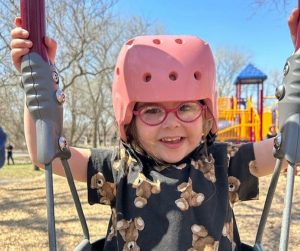 The most productive (and most frequent) parenting advice that I give to families is to STOP TALKING SO MUCH. I don’t mean all the time—most of the time the constant narration that we do with babies and young children is appropriate and may, in fact, enhance development. When you are out in the world and serving as your child’s main source of information, by all means, gab away. Talk to kids about feelings and sharing and eating vegetables and being nice and how the car wash is not the entrance to the evil Kingdom of Doomsville. But don’t talk, so much or at all, in the middle of or following a big honking tantrum (or any bad kiddo stuff like hitting or kicking or biting or any of the other –ings).
The most productive (and most frequent) parenting advice that I give to families is to STOP TALKING SO MUCH. I don’t mean all the time—most of the time the constant narration that we do with babies and young children is appropriate and may, in fact, enhance development. When you are out in the world and serving as your child’s main source of information, by all means, gab away. Talk to kids about feelings and sharing and eating vegetables and being nice and how the car wash is not the entrance to the evil Kingdom of Doomsville. But don’t talk, so much or at all, in the middle of or following a big honking tantrum (or any bad kiddo stuff like hitting or kicking or biting or any of the other –ings).
In a previous post, I talked about how talking too much to a very young child after a behavior you want to see less of can be confusing because they can’t really tell the difference between the lovely tones that you use when you are thrilled with them and when you are livid. The same is true for the time during or after a tantrum, except that the attempts to communicate often fuel further explosive behavior and do not go very far in helping to change it.
Most kids (if you are the proud Mater of the exceptions to this, bless you!) don’t learn very well when they are in that tornado-mode that happens during or right after a tantrum. In fact, you can be sure that nothing you say will make any difference the next time the same situation happens. Often we talk in order to feel like we are doing something or to let other people know that we know our kid just flipped his wig in the Thomas the Tank Engine aisle. All of that turns into noise, just like the teachers from Charlie Brown! There is, however, something that I have used a lot and like very much.
These “Visual Perspective Taking Exercises” are based somewhat on the work of Carol Gray (known for her social stories and comic strip conversations). In these exercises (which are done after, but not immediately after, a child has lost it), a parent or teacher (or other adult) uses a basic drawn template (I prefer some stick figures with blank faces, myself, but that is because I can’t draw) to initiate a conversation about what the heck just happened back there.
- There are two steps to completing this activity. First, the child needs to respond by filling in the faces of the figure representing him and information about what happened (an adult can scribe, or do the words/pictures, for him). This should be a simple, accurate representation of the event. The adult who is scribing can fill in the other person/people with their emotions and thoughts written above. For very young children, those words are just a reminder and do not need to be very elaborate. For older children (especially those that can read), the text can serve a more important purpose. For example, the first drawing of an incident in which a child threw a tantrum because he could not have a toy that he wanted might look like a “kid” stick figure and a “mom” stick figure. The “kid” would have an angry face and the word/thought bubbles would say things like, “I want that toy so much!” or “I am so mad at my mom.” The “mom” figure would have an upset face (maybe even downright stricken!) and her thought/word bubbles would say, “I am so sad that Johnny is acting like this” or “I can’t get him toys when he yells and kicks.”
- The next step is to “re-create” a version of the incident in which the child (with the help of the adult working with him) has a different, and more appropriate verbal and emotional reaction (or asks for what he needs in a non-explosive way). The adult working with the child can scribe for him initially, but eventually he will need to provide these responses himself. In our example, this one could look like the “kid” figure having a neutral/kind of bummed face and saying, “I want that toy so much but Mom said no. Maybe next time.” The mom figure could be saying (with a very happy beaming face) “Wow. I know that was hard for Johnny, but I really like how he is acting. Maybe a toy next time!” The adult who is facilitating (usually Mom or a teacher) can “act out” the parts for a non-reader. A way to really teach this is to have the adult fill in the “other person” part with a really positive face and then ask the child, “What could you have done to make Mommy feel so proud of you?” That is the cue to really think about how his behavior (both good and bad) makes other people feel and behave. It’s neat!
- In the beginning, for every opportunity to process an event that was challenging, the same process should be applied to a situation that the child handled well. In this way we avoid simply creating a catalog of explosive incidents, but the child can see this as a tool to process emotional and behavioral events—positive and negative.
- Creating a shorthand glossary of symbols (a heart for proud, angry eyebrows and mouth symbolize, well, anger, etc.) can be helpful so you can dash one of these off in a hurry.
- The goal of these is to get Johnny (poor, misbehaving Johnny) to step out of the moment if frustration and imagine what it would be like if he held himself together. That is what the second drawing does—gives a rehearsal of a better outcome. This increases (it really really does) the likelihood that, in a similar situation, Johnny will use some of the strategies that you discuss as you guide him through that critical second drawing.
- I always throw out the first drawing—no one needs a reminder of a tantrum (or other tricky behavior) but I keep and review the “projections” (or made-up better outcomes that didn’t happen but should have happened).
- Remember that these should be done a bit later—once everyone is calmer. As always, check in with your pediatrician if you have some real concerns about the frequency or intensity of your child’s meltdowns. –Liz Schwandt

















